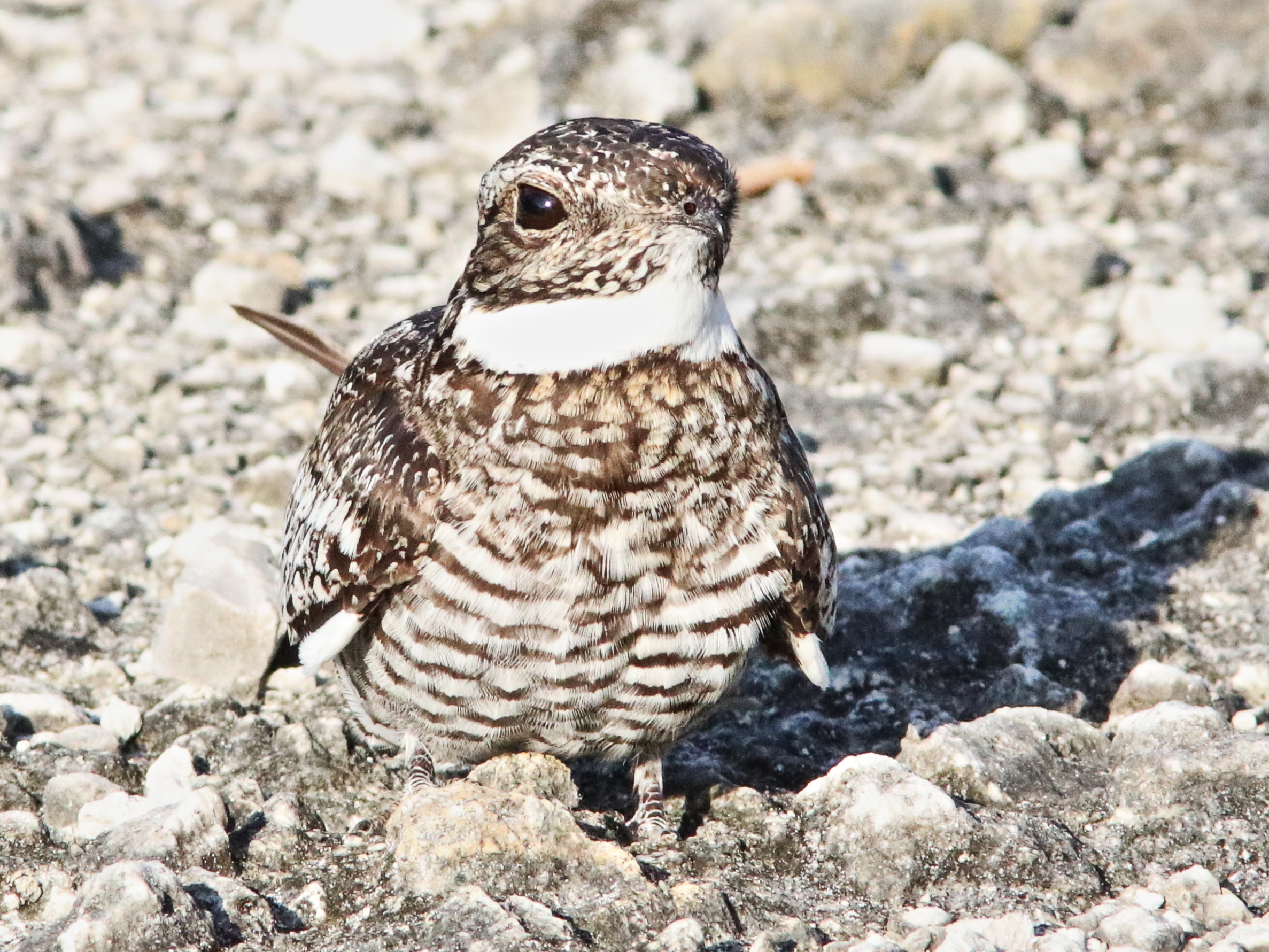Photo by Kenneth Cole Schneider
According to this week’s DNR report, “It's that time of year - common nighthawks are on the move! These acrobatic fliers are gracing Wisconsin's skies as reports of dozens and even hundreds of the birds came in this week. Look for flocks weaving overhead near dawn and dusk, their erratic flight patterns and bold white wing bars making for fairly straightforward identification. Nighthawk numbers typically peak in the last week of August or very early September.”
Mark always looks forward to the nighthawk migration. It peaks around his birthday, and he thinks of it as a birthday present from Mother Nature.
We visited Erstad Prairie on August 22 and near dark were impressed to see around 25 nighthawks looping and hunting high above the wetlands. We returned to Goose Pond and found a couple nighthawks hunting for emerging moths over the water.
While at Erstad Prairie, we visited with a family that drove out from Sun Prairie to enjoy the sunset and look for birds. They were pleased that we pointed out the nighthawks – a new bird for them.
Photo by Kenneth Cole Schneider
Nighthawks are actually not hawks, but rather are in the Nightjar family along with whip-poor-wills. “Night”-hawks usually hunt at dawn and dusk and not all night. Nightjars are medium-sized crepuscular birds characterized by long wings, short legs, and very short bills.
Sam Robbins in his 1991 Wisconsin Birdlife wrote that “Nighthawks are abundant in fall migration. The late-August flights staged by this aerial acrobat are nothing short of spectacular.”
Hoy, a naturalist wrote in 1853 that “For two hours before dark, these birds formed one continuous flock moving south. They reminded me, by their vast numbers, of Passenger Pigeons.”
According to the North American Breeding Bird Survey common nighthawk populations declined over 60% between 1966 and 2014. Partners in Flight estimates the global breeding population at 16 million, with 88% breeding in the United States.
Across North America, threats include reduction in mosquitoes and other aerial insects due to pesticides, and habitat loss including open woods in rural areas and flat gravel rooftops in urban ones. Crows can prey on eggs and young on roofs, and we wonder how high temperatures impact the nests. Nighthawks are also vulnerable to being hit by cars as they forage over roads or roost on roadways at night.
Photo by Kenneth Cole Schneider
Nighthawks are ground- or roof-nesters and like to nest on dry sandy soil in pine or oak barrens. In the first Breeding Bird Atlas from 1995-2000 we found nighthawks probably breeding in Columbus and Portage on flat roofs. Statewide, only 24 nests were confirmed. Now in the fourth year of the second atlas project, we have no records any possible breeding nighthawks in Columbia County; the only nesting record in Dane County was confirmed at the Mazomanie Oak Barrens State Natural Area, and breeding has only been confirmed in 15 blocks statewide.
Nighthawks are difficult to confirm nesting because their nests can be difficult to find. However, they're easy to get as “probably nesting” due to the males dramatic “booming” display flight as he abruptly dives for the ground and peels out of his dive making a booming sound with his wings. This activity indicates courtship and if successful, a secret nest will be made and tended.
When migrating or when feeding over insect-rich areas such as lakes or well-lit billboards, you may hear their buzzy, American Woodcock-like peent call.
Common Nighthawk range map and migration info provided by Cornell Laboratory of Ornithology
Common Nighthawks migrate on one of the longest migration routes of any North American bird. Most travel over land through Mexico and Central America, although many do pass through Florida and Cuba, flying over the Gulf to reach their wintering grounds in southern South America. Common Nighthawks are among the last migrants to return to their breeding grounds in spring.
We hope you can spend some evenings looking for this interesting bird while they are on a migration that may cover 4,000 miles.
By Mark and Susan Foote-Martin, Goose Pond Sanctuary resident managers








